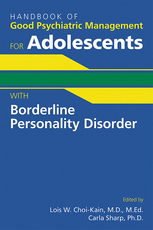Narcissism and Its Discontents
Diagnostic Dilemmas and Treatment Strategies With Narcissistic Patients
Play Sample
View Pricing
Description
The definition of narcissism can be a moving target. Is it an excess of self-love? Profound insecurity? Low self-esteem? Too much self-esteem? Because of the multifaceted nature of narcissistic personality disorder (NPD), treating this disorder presents clinicians with a range of wholly unique challenges.
Narcissism and Its Discontents recognizes the variable nature of NPD and provides a template for adjusting treatment to the patient rather than shoehorning the patient into a manualized treatment that may prove to be less effectual.
This guide offers clinicians strategies, including transference and countertransference, to deal with the complex situations that often arise when treating narcissistic patients, among them, patient entitlement, disengagement, and envy. The authors provide a skillful integration of research and psychoanalytic theory while also addressing psychotherapeutic strategies that are less intensive but also useful—being cognizant of the fact that a majority of patients do not have access to psychoanalysis proper.
A chapter on the cultural aspects of narcissism addresses the recent societal fascination with NPD in the discourse on politics and celebrity, particularly in the age of social media. Regardless of the treatment setting—psychoanalysis, psychotherapy, pharmacotherapy, partial hospital, or inpatient—clinicians will find a wealth of approaches to treating a diverse and challenging patient population in Narcissism and Its Discontents.
Contents
- About the Authors
- Preface
- Part I: Diagnostic Dilemmas
- Chapter 1. Narcissism and Its Discontents
- Chapter 2. The Cultural Context of Narcissism
- Chapter 3. Modes of Relatedness
- Part II: Treatment Strategies
- Chapter 4. Beginning the Treatment
- Chapter 5. Transference and Countertransference
- Chapter 6. Tailoring the Treatment to the Patient
- Chapter 7. Specific Treatment Strategies
- Chapter 8. Termination
- Index
About the Authors
Glen O. Gabbard, M.D., is Clinical Professor of Psychiatry at Baylor College of Medicine in Houston, Texas. He is also Training and Supervising Analyst at the Center for Psychoanalytic Studies in Houston. He is in the full-time private practice of psychiatry, psychoanalysis, and psychotherapy.
Holly Crisp, M.D., is Clinical Associate Professor at Baylor College of Medicine in Houston, Texas. She is on the faculty at the Center for Psychoanalytic Studies in Houston. She is in the full-time private practice of psychiatry, psychoanalysis, and psychotherapy.
Related Products
Carousel Control - items will scroll by tabbing through them, otherwise arrows can be used to scroll one item at a time








